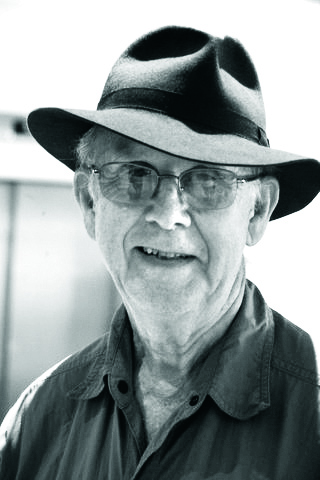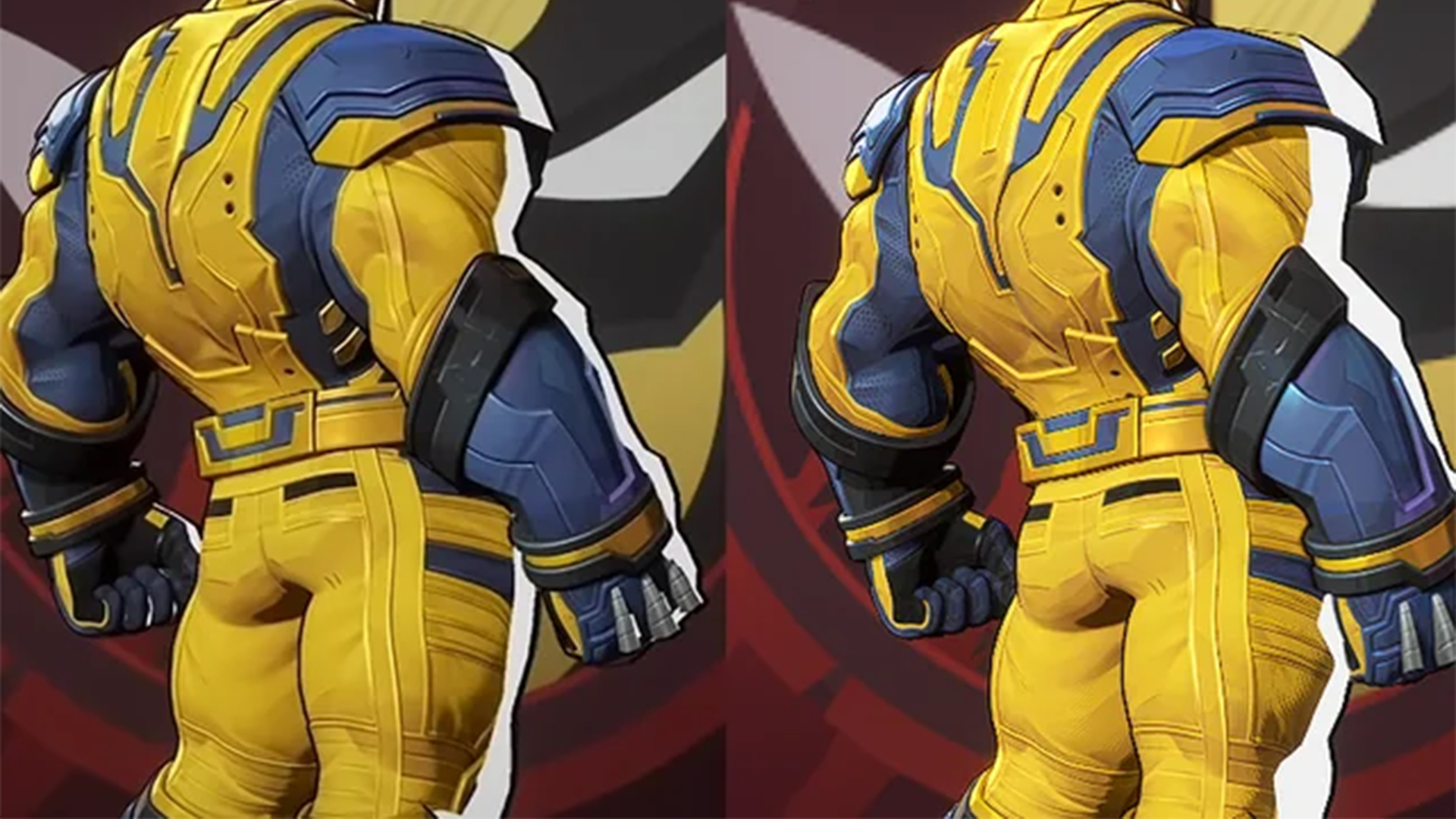Draw anatomy: 12 tips for drawing the body
Learn how to draw anatomy by focusing on action and making use of the 'icons' of basic rendering.
In this post, I’ll reveal how to draw anatomy, using the basic steps in my lectures, and how they’re related. I’ll start with the first conception or inkling of an idea, and take you through to the final presentation. Each step involves applying core visual tools, like selecting icons for a particular program, that you need to know how to use, to develop your concept.
Continuing the computer analogy, drawing is the graphical interface to your imagination. These tools enable you to relate your idea to yourself and the world. I’ve organised these tools into a series of logical steps that can be applied to any visual presentation or any study of how to draw. All of us know a lot more than we think we do, and much of what I teach is simply making this knowledge accessible.
My desire is to bring a feeling of life to the drawing, based upon movement. In this workshop I’ll focus upon the action –otherwise known as gesture – and the primary rendering steps involved in drawing the figure straight from the imagination. If you need some materials, see our best pencils and best sketchbooks for artists posts.
01. Think tools not rules
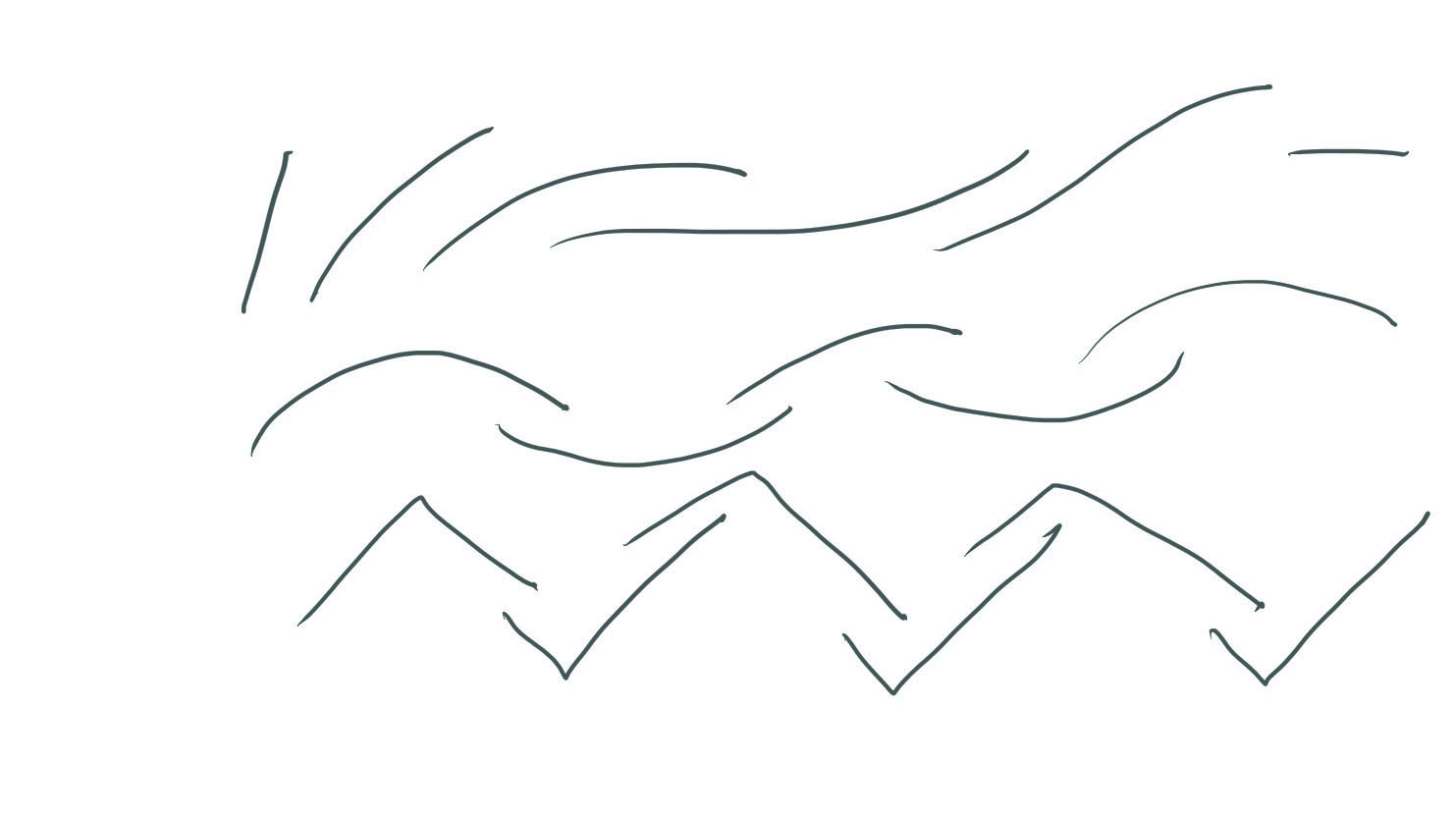
When drawing from life and from imagination, the key is to understand the action that you’re trying to depict. This is an analytical process. In this example, the lines lead you through the figure – they’re not copies of shapes, outlines or stick figures. Each fragment leads you to the next, as if you were animating a trip through the figure, moving from one side to the other. No dead drawings like CSI. It’s all about transition. Make the viewer’s eye move.
02. Go across the form
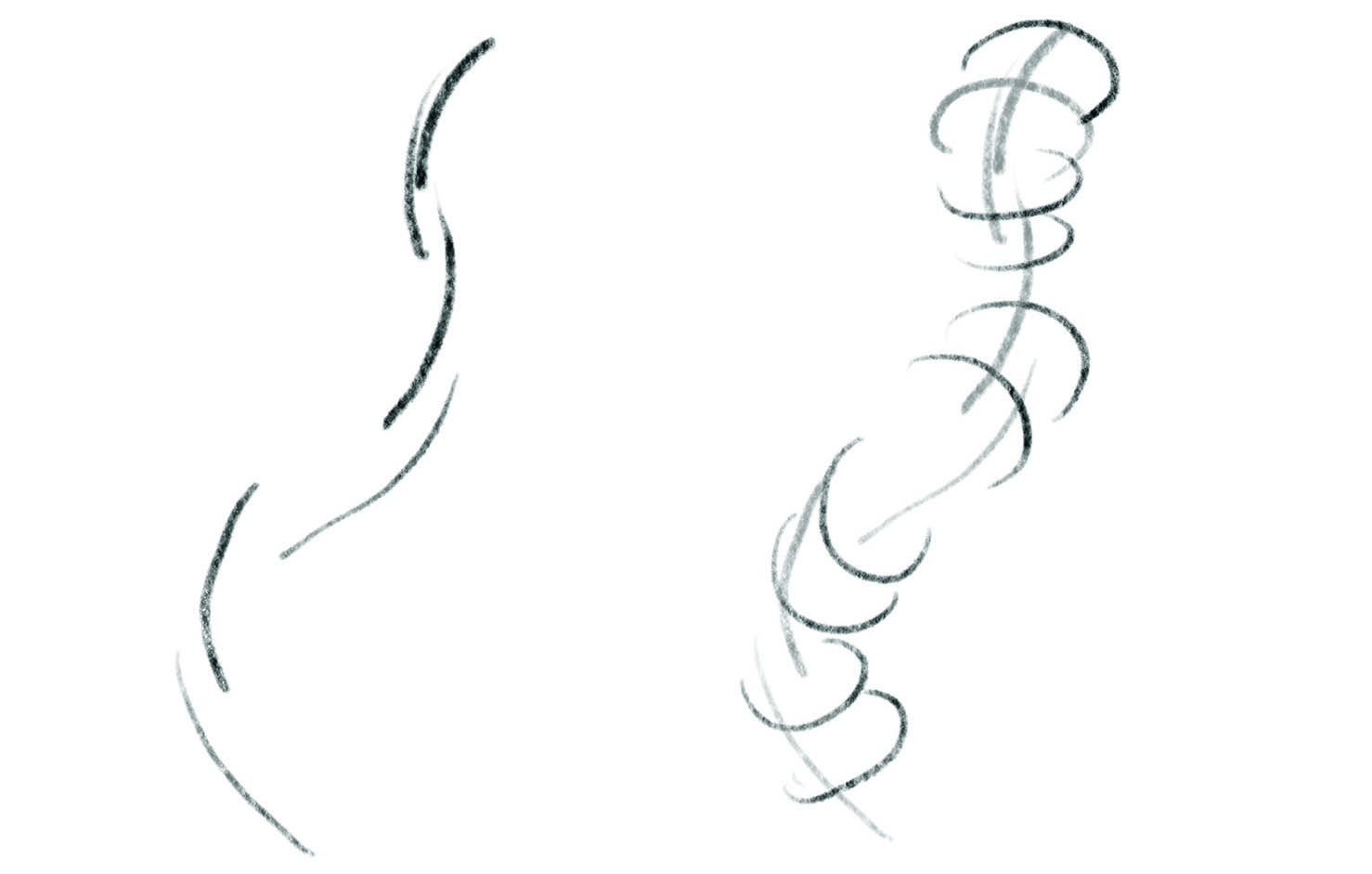
The next primary tool is using lines going across and around the form, similar to a basic wire frame. Notice how it gives the first step a clear understanding of the forms in space. Focus on 3D, not shape or tone.
03. Build up the figure
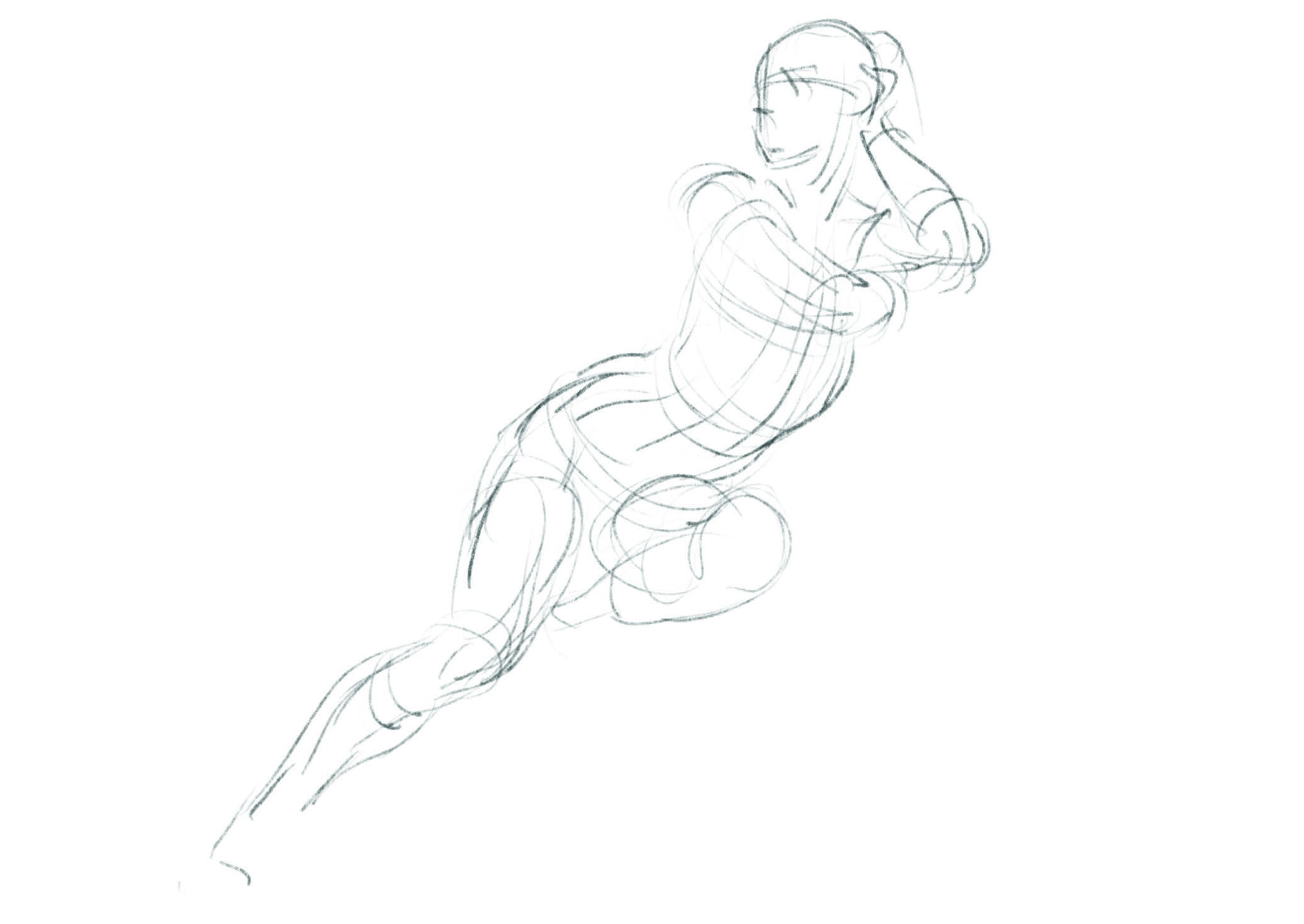
In this step we come to the workhorse of describing form in action. The basic sphere is the first step in the development of the form. When adding the sphere, we focus upon creating clear, simple volumes. You can look at these as prototype anatomical structures, but don’t get obsessed about having to make them perfect for now. These are general forms that will be adjusted as we go along. But for now, pay particular attention to how they overlap.
04. Bring it to life
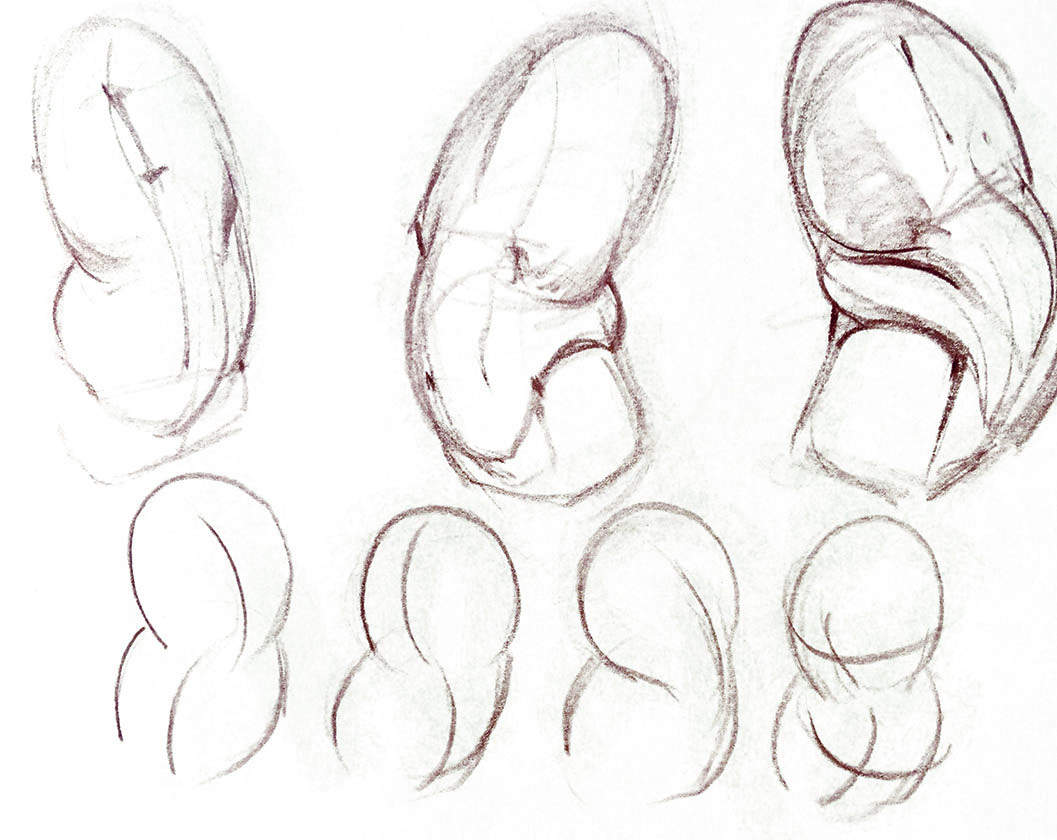
Our goal as artists is to add a sense of life and movement to our drawings. So it’s important that you use lines that communicate the gesture. Notice how the same simple spheres communicate very different actions. Every line has meaning. Your drawing needs to be purposeful in developing your first idea, which is your end goal.
05. Look to reality
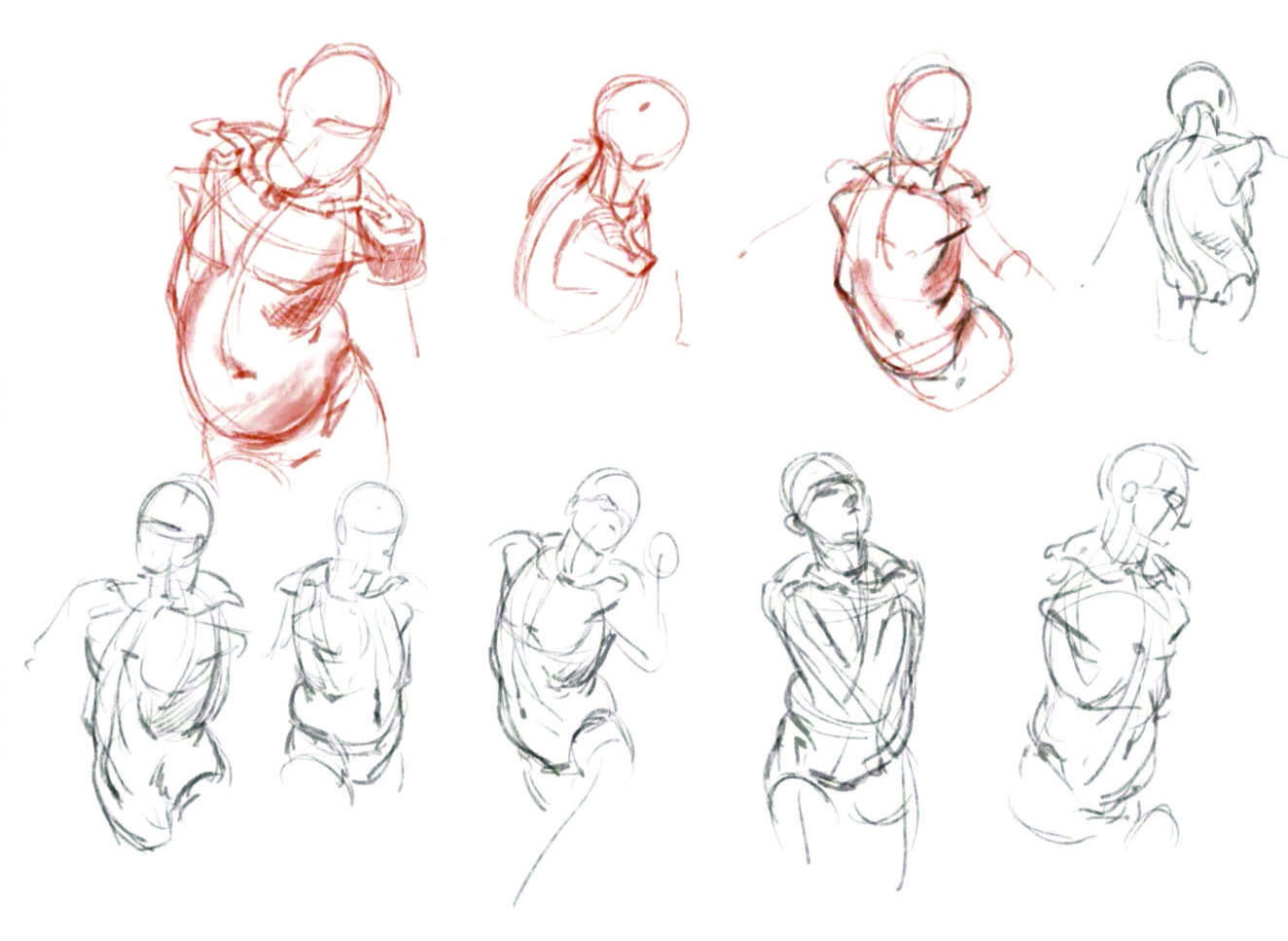
How your drawing communicates a sense of physical reality is key to your drawing having a sense of life. The first exercise in studying animation is the bouncing ball, and the primary elements of how the ball changes shape on hitting the ground and regains its shape in rebounding. Squash and stretch are fundamental drawing terms. I first heard these in discussions of the works of Michelangelo and Pontormo. Look at the Belvedere Torso, copied by artists since Roman times. Note how I’m applying this basic concept to the simple forms of the figure.
06. Make it move

At this point in the drawing we get a merging of fundamental construction and anatomy in action. All the muscles are connected at two points and some at more. How the basic underlying structure moves and interacts is giving visual expressions to how they affect the surface anatomy. So now is the perfect time to focus on not only the muscles, but the fabric of skin and fat on top of the muscles and their interaction. Remember that everything goes over, around, compresses and stretches.
07. Be aware of symmetry
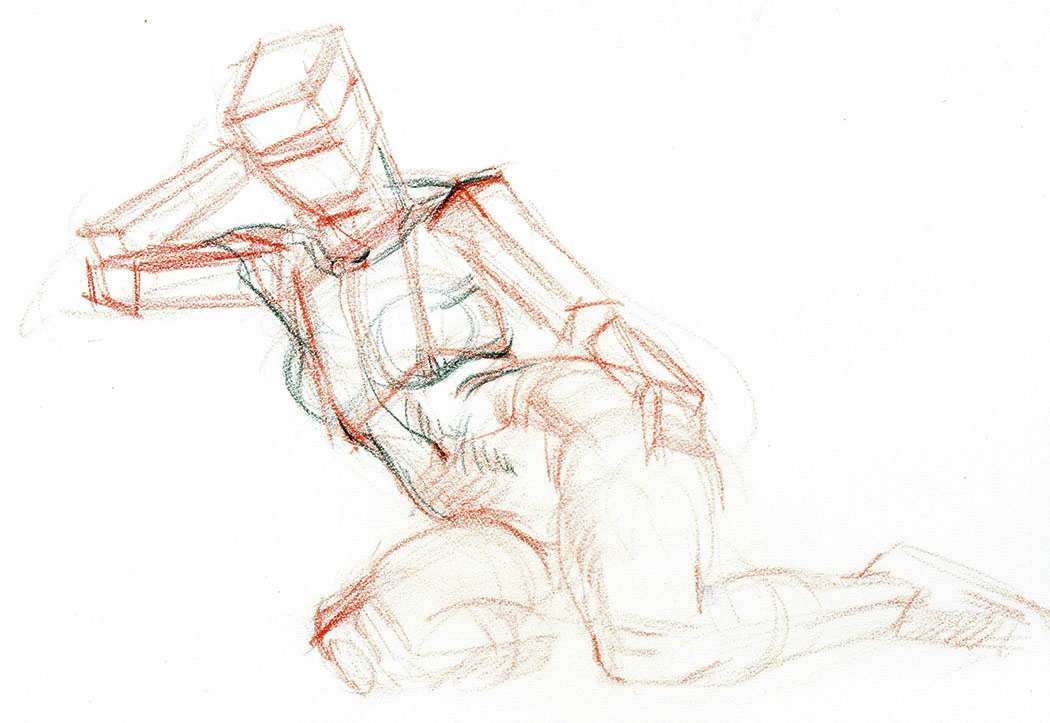
Analysis of the pose is key when drawing from a model. In doing the drawings so far I’ve been building on an idea in my head, but in drawing from a model it’s not often clear what the action is. Our next tool is the box, which works to both clarify our understanding of the live model and our conceptual intent. This is because it introduces critical anatomical landmarks that show us symmetry – a key element in revealing action.
08. Keep the movement
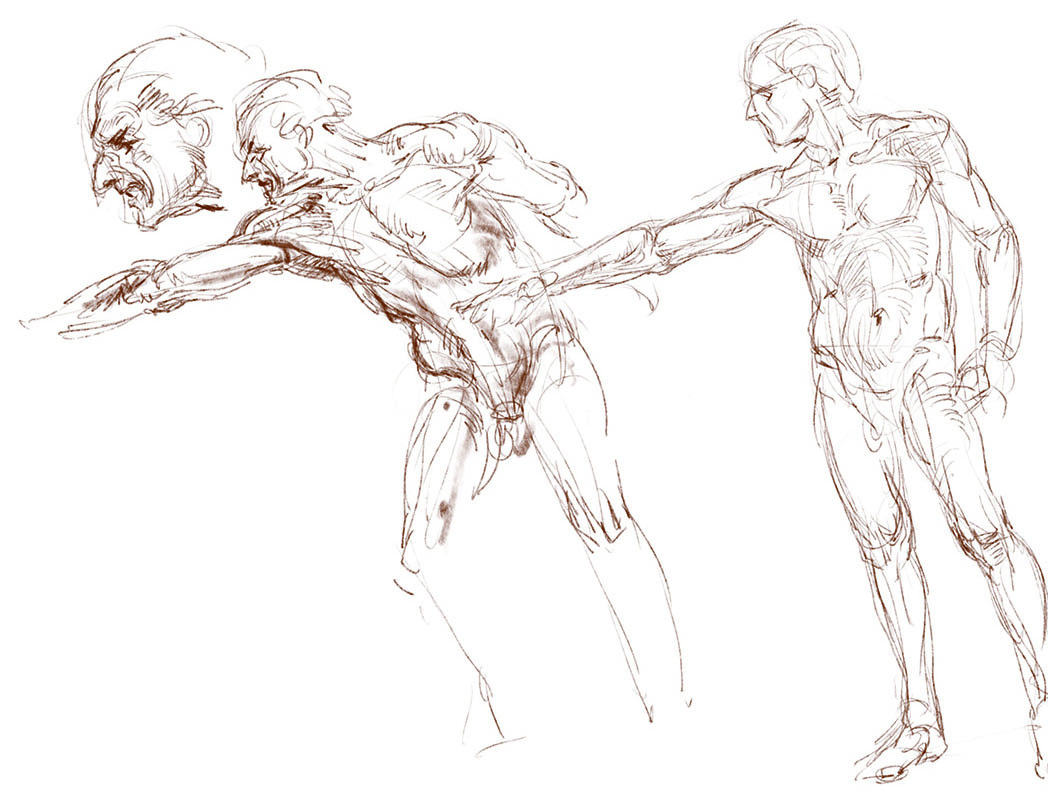
It’s important to focus on how our original gesture sketch is applied in the development and rendering of the anatomy. We’re drawing figures in action, not anatomy book illustrations. Each of the lines leading through the figure are transitions from one point to the next. In using these lines as guides I compose the anatomy to communicate the action.
09. Use the tone
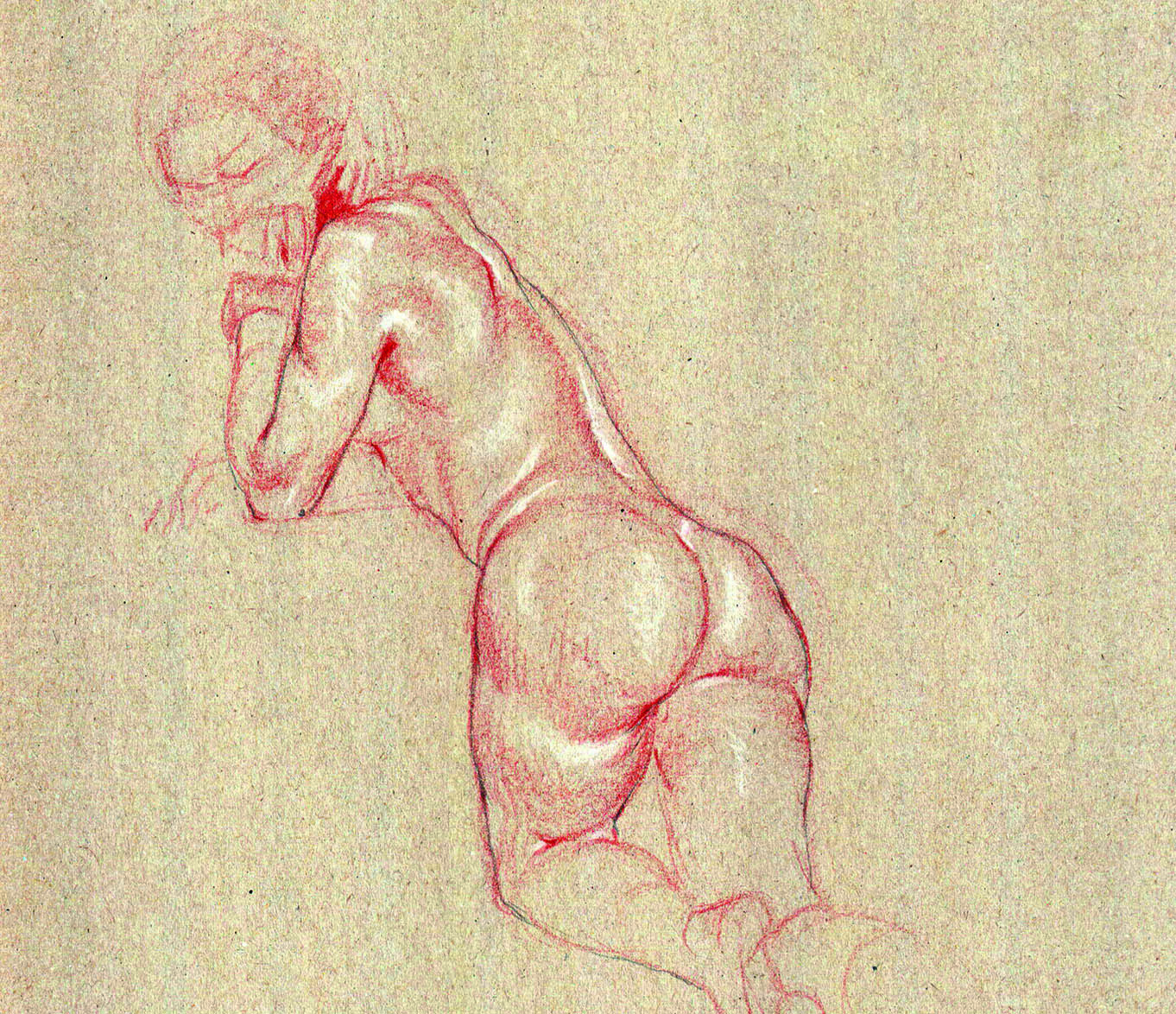
The first tonal rendering tool is the modelling tone. Push the sides back, and what faces you is in light. As the form turns away it goes into tone. The tones move the eye in the same way lines do. They have to direct and describe the form. Don’t copy tones, but use them to describe form.
10. Use the cylinder
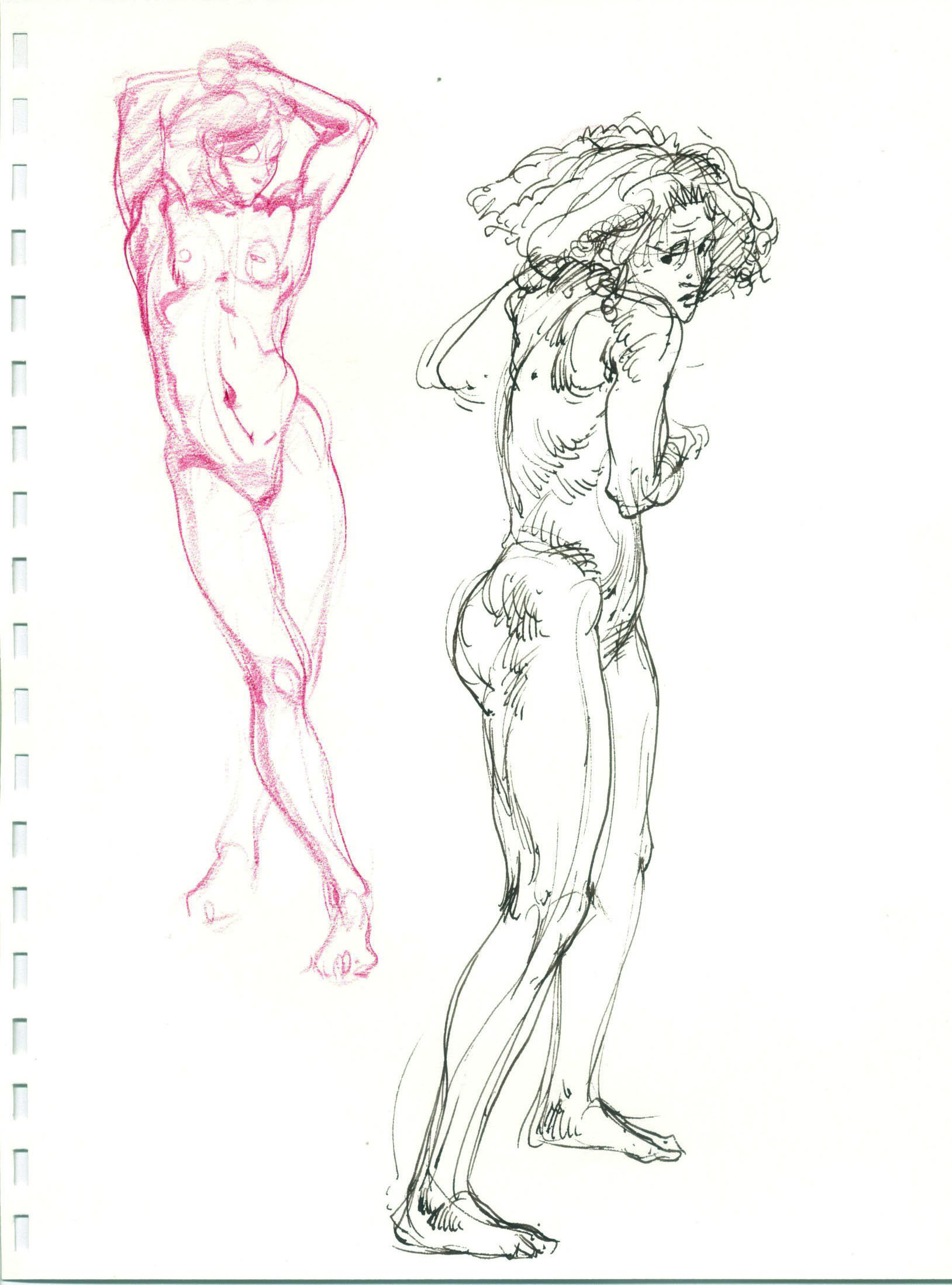
As we drew the simple cross contours back in step 2, each showed a section of a cylinder. The cylinder becomes our next basic tool for the figure and a building foundation for anatomical information. Where you place the ends of the cylinders and how you draw the ellipse are the main points in showing direction and foreshortening. The cylinder becomes part of a visual structure we build anatomical structure on.
11. Bring it to life
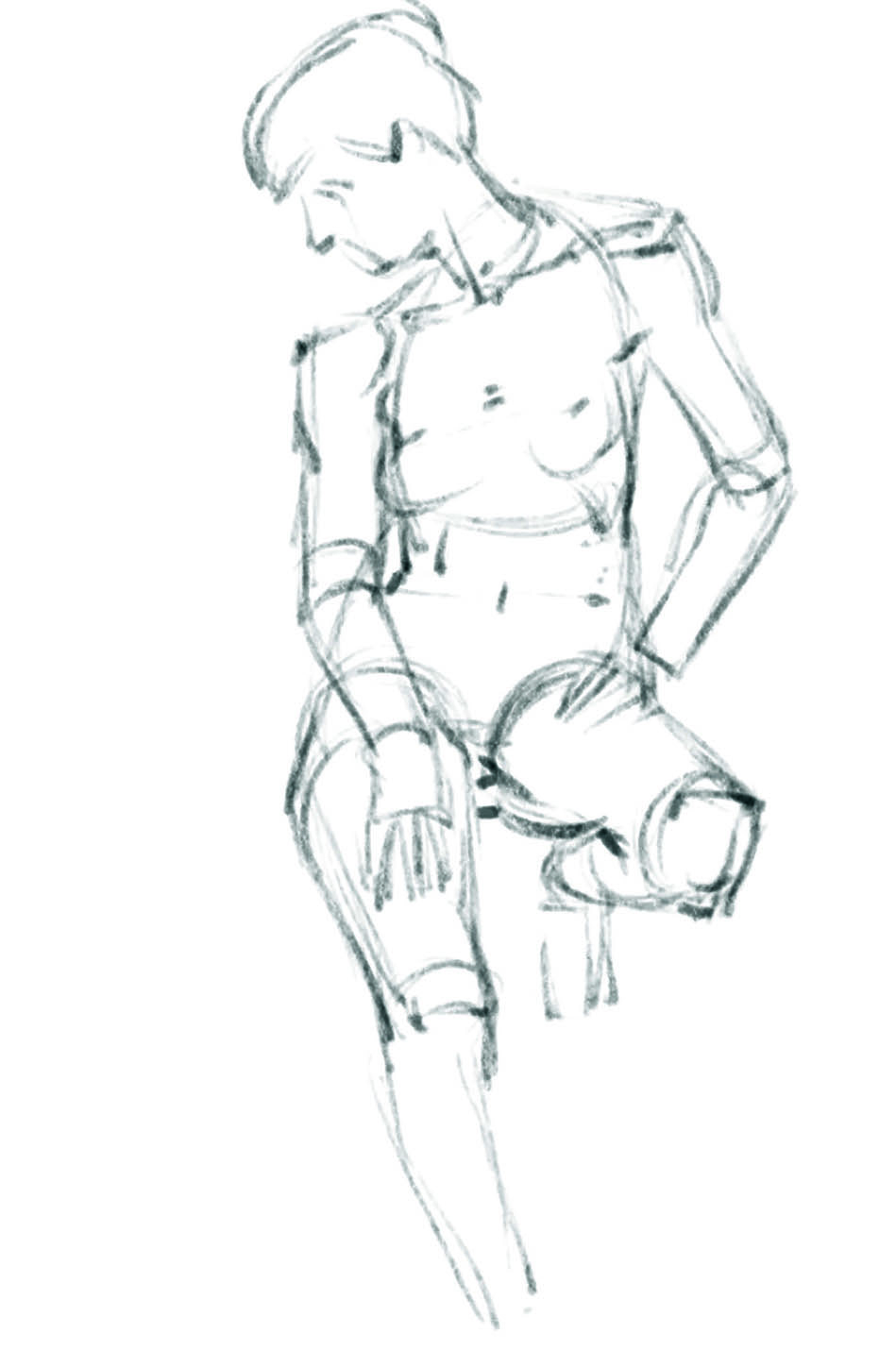
A major element in the drawing that’s often overlooked is the subjective content of the subject.In this example, notice how the look of the eyes and expression change the feeling of the drawing. Make the action and body language obvious, or no one will understand your intentions for the piece.
12. Use the photo, don't copy it
When working from photographs, it’s important to keep in mind that
a copy of a figure in action doesn’t mean the drawing will show action. You must create it. I tell my students, we never copy, we analyse and construct. Compose the anatomy to show the action.
This content originally appeared in Paint & Draw Anatomy bookazine. Buy it from Magazines Direct.
Read more:
- The best oil paint canvas
- The best sketchbooks for artists
- How to draw movement: 16 top tips
Get the Creative Bloq Newsletter
Daily design news, reviews, how-tos and more, as picked by the editors.

Thank you for reading 5 articles this month* Join now for unlimited access
Enjoy your first month for just £1 / $1 / €1
*Read 5 free articles per month without a subscription

Join now for unlimited access
Try first month for just £1 / $1 / €1
